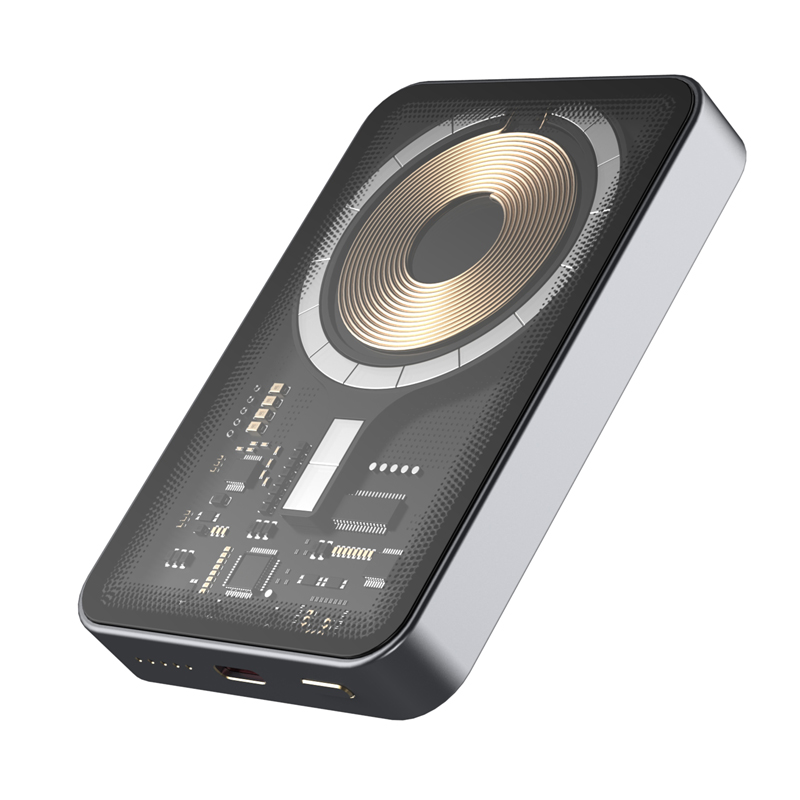Power Banks vs. Wall Chargers: The Pros and Cons

Power Banks vs. Wall Chargers: A Comparative Analysis
Exploring the Advantages and Disadvantages

Exploring the Advantages and Disadvantages


Power Banks vs. Wall Chargers - a debate that often leaves tech enthusiasts confused. In this article, we will delve into the pros and cons of power banks and wall chargers to help you make an informed decision based on your needs and preferences. Let's explore this charging battle in detail:
Convenience:
Power Banks: One of the key advantages of power banks is their portability. They allow you to charge your devices on the go, making them ideal for travel and situations where power outlets are not readily available. Power banks come in various sizes, catering to different power requirements. From compact pocket-sized options to high-capacity ones, you can choose according to your needs.
Wall Chargers: Wall chargers, on the other hand, are stationary devices that require a power outlet. They are convenient for everyday use, mainly in office or home settings where you have easy access to power sources. Wall chargers come with different power ratings, allowing you to charge your devices efficiently, typically faster than power banks.
Conclusion: While power banks offer the convenience of charging devices on the go, wall chargers are more suitable for regular use when you have access to power outlets.
Charging Speed:
Power Banks: The charging speed of power banks can vary depending on their capacity and the devices being charged. Some power banks feature fast-charging capabilities, enabling quicker charging times, while others might have slower charging speeds. It's crucial to consider the power output of the power bank to ensure optimal charging speed.
Wall Chargers: Wall chargers generally provide faster charging speeds than power banks. They are designed to deliver higher power outputs, ensuring quick and efficient charging for your devices. Wall chargers often come with advanced charging technologies, such as Quick Charge or USB Power Delivery, enhancing charging speed even further.
Conclusion: If charging speed is your priority, wall chargers are the better choice as they offer faster and more reliable charging than power banks.
Capacity and Battery Life:
Power Banks: Power banks are available in various capacities, typically ranging from 2,000mAh to 30,000mAh or more. The capacity you select depends on your charging needs. With higher capacity power banks, you can charge your devices multiple times before needing to recharge the power bank itself. However, it's important to note that power banks also experience power loss during charging and discharging.
Wall Chargers: Unlike power banks, wall chargers do not have a built-in battery and rely on the power grid for their operation. They provide an uninterrupted power supply, ensuring your devices are always charged whenever they are connected. The capacity limitation is not a concern, as the wall charger can supply power continuously.
Conclusion: If you require extended charging capabilities without the need for recharging the power source itself, power banks with higher capacities are the ideal choice. However, if your priority is consistent and uninterrupted charging, wall chargers are more reliable.
Versatility and Compatibility:
Power Banks: Another significant advantage of power banks is their versatility. They can be used to charge various devices, ranging from smartphones and tablets to Bluetooth headphones and cameras. Universal compatibility ensures that power banks work with multiple devices, regardless of the brand or model.
Wall Chargers: Wall chargers are also compatible with a wide range of devices, offering versatile charging options. However, unlike power banks, which can be carried around effortlessly, wall chargers are fixed at a specific location. It's important to have multiple wall chargers in different places, such as home and office, for convenient access.
Conclusion: Power banks provide the advantage of portability and versatility, allowing you to charge your devices anywhere, whereas wall chargers are reliable and can be strategically placed in multiple locations for easy access.
Cost and Energy Efficiency:
Power Banks: The price range of power banks varies based on their capacity and brand. While high-capacity power banks might be more expensive, they offer extended charging capabilities. Power banks are generally energy-efficient devices that reduce energy consumption by cutting off power supply once the connected devices are fully charged.
Wall Chargers: Wall chargers tend to be more cost-effective compared to power banks, as they do not have a built-in battery. They are directly connected to the power grid and can supply power as long as they are plugged in. However, wall chargers consume some standby power, even when not actively charging a device.
Conclusion: If cost is a major consideration, wall chargers are generally more affordable, but power banks provide cost savings in the long run due to their energy-efficient functioning.
Summing It Up
Both power banks and wall chargers have their own advantages and disadvantages. Power banks offer portability and versatility but may have slower charging speeds. On the other hand, wall chargers provide faster charging speeds but lack mobility. Consider your specific needs, such as travel requirements, charging speed preferences, and budget constraints to make an informed decision. Ultimately, the choice between power banks and wall chargers depends on your individual lifestyle and priorities.




